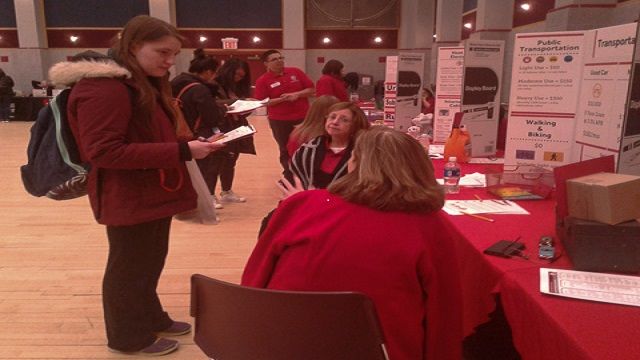Photo by Nick Spennato
By Nick Spennato
Contributing Writer
Stony Brook students were given the opportunity to see just how far their first paycheck out of college would take them at the March 23rd event, The Game of Life: After Stony Brook edition.
The concept is simple. Take The Game of Life, a board game that revolves around making smart financial decisions over the course of a “lifetime” and apply it to the life of a Stony Brook student. Using the average starting salary for their chosen field, students were handed brightly colored dollar bills representing a month’s wages. Then, they were tasked with navigating the expenses they are likely to face in their first month after Stony Brook. Everything from taxes and student loans to dining out and Netflix subscriptions came up during the student’s walk through “the board,” where each space is a station to determine how much they are likely to spend. The goal, much like in real life, is to budget properly and maybe even have some money left over at the end of the month.
The event stemmed from an attempt to focus the financial literacy effort at Stony Brook. After three years of workshops on investing wisely and dealing with debt the Office of Financial Aid’s Money Smart Seawolves program decided to try something more interactive, and to Renee Pelletier, the Senior Financial Aid Advisor and the event’s organizer, Life just seemed like the natural choice.
“The Game of Life, it’s very much about financial decisions, it’s all about the choices you make,” Pelletier said. “But, if you do mess up, it’s just a game. You can try again.”
Students were confronted with generally unavoidable expenses during the game. Sometimes students lost, with their budgets in the red by the end of the game. Those students were sent to one of the various help tables where they could reconsider their choices, maybe choosing to take on an extra roommate or cut out name brands to make it through.
By the end of the day, 70 students who had preregistered for the event and a number of walk-ins had been through the game board. The students who had chosen to attend seemed engaged, asking questions and considering their choices carefully as they moved from space to space.
Most students, around 90 percent, said that they had learned something from the event and had found it enjoyable according to a survey given to students who had reached the end.
Jackie Pascariello, who checked over students’ budgets at the end of the board, said that around 2/3 of the students she spoke with managed to have money left over by the time they were through the month.
Perhaps the element that made the event click with so many students was the decision to use paper money. Students used those funds to settle their debts at each of the spaces and could watch them physically dwindle away as they spent.
“On paper, it’s easy to scratch out and revise,” Pelletier said. “It’s a lot harder when you have to hand your bills over.”



I mean students are enjoying the life and they know how they developed their life in here. For get better facilities they like to do more hard work according to technology.